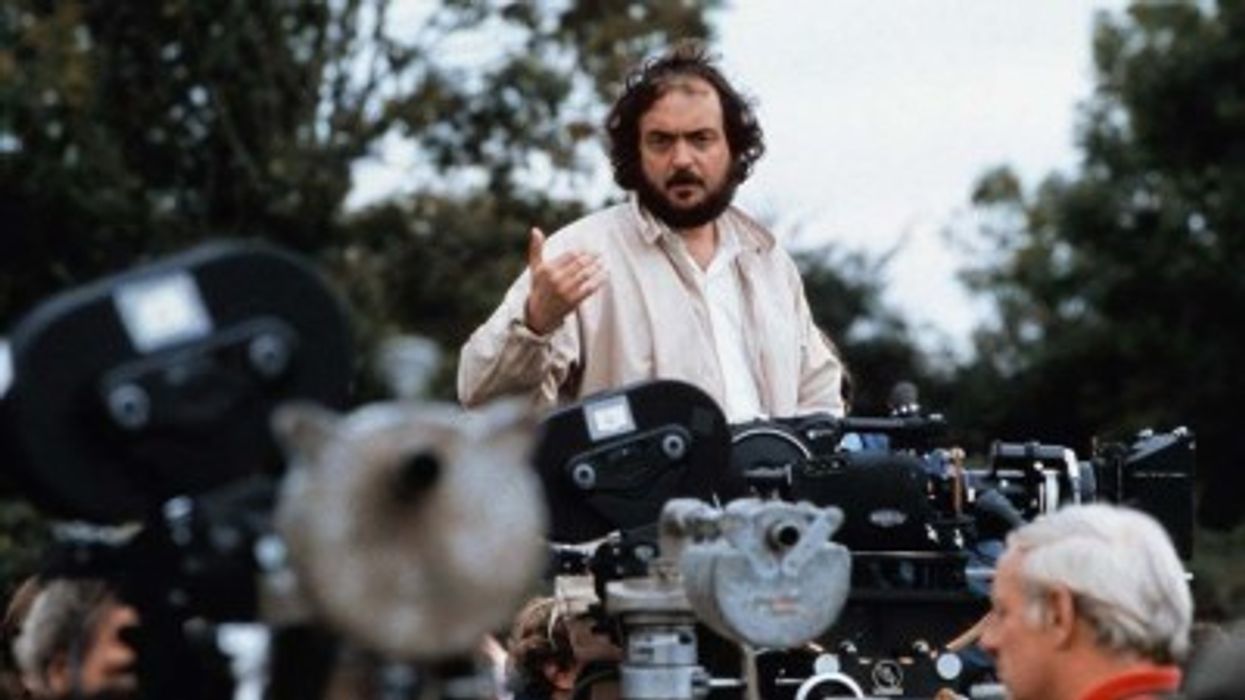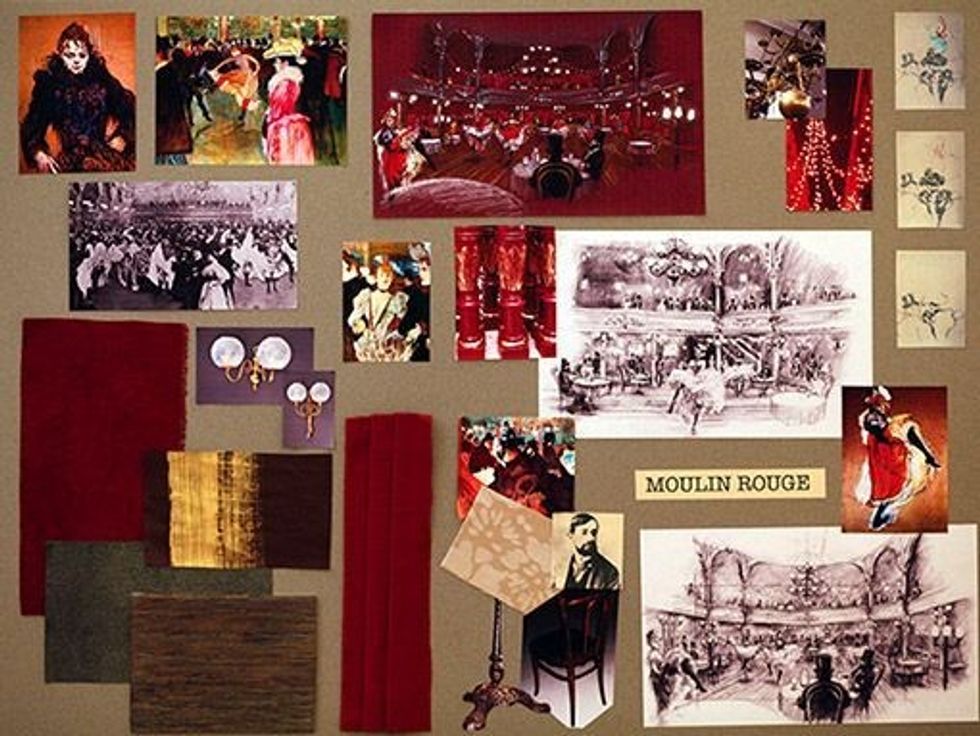The Definitive Guide to Creating a Film and TV Mood Board
It's time to get into the mood to make a great film.

Director Stanley Kubrick
Tell me if this has happened to you: you're trying to pitch on a commercial or film, and you're having trouble communicating with the producers about the look and the feel of the project. Maybe the most important part of the pitch process is communicating how the audience should react.
If you want to make sure everyone is on the same page, you might need to create a mood board.
Creating a director's mood board is an essential step in pre-production for any film or television project. It serves as a visual blueprint, expressing the intended aesthetics, tone, and mood of the upcoming production.
So let's go through how to make one together. This comprehensive guide will walk you through the process of creating an effective director's mood board, providing a solid foundation for your creative vision.
The Definitive Guide to Creating a Director's Mood Board for Film and TV
Creating a director's mood board is an essential step in the pre-production phase of film and TV projects. A mood board helps directors visually communicate their creative vision to the production team, including the cinematographer, production designer, costume designer, and other key collaborators.
Understanding the Importance of a Mood Board
A mood board, sometimes referred to as an inspiration board, is a collage of visual elements such as images, color palettes, and videos. It's a creative tool that encapsulates the envisioned look and feel of a film or TV show.
The Mood Board Is A Visual Communication Tool
A mood board is a potent communication tool. It provides a tangible representation of abstract ideas, making it easier to share your vision with your team, including designers, cinematographers, and actors.
By offering a shared visual reference, mood boards facilitate collaboration. They allow everyone involved in the project to contribute ideas and suggestions, refining the overall vision.
From costumes and set designs to lighting to shot composition, a mood board guides various aspects of the production process. It ensures consistency in aesthetic decisions, contributing to a cohesive final product.
What Are the Key Components of a Mood Board?
I find it pretty flattering when directors make mood boards for screenplays I've written. It helps me understand their vision and make sure we are all on the same page.
There are some essential components that help get this message across. When crafting a mood board, consider including the following elements:
Characters
Include visual references that capture the essence of your characters. This could include photographs, sketches, or even color palettes that reflect their personality or emotional state.
Who's in this project? Who do you think should play them?
Locations and Set Design
Visuals representing the desired locations and set designs can help your art department understand your vision. Include images that reflect the architectural style, period, or mood of the locations in your script.
Where are we shooting this project? What are the benefits of the places we want to shoot? Are there rebates or a POV that changes?
Wardrobe and Props
Visual references for costumes and props can help your wardrobe and props departments align their work with your vision. These could range from historical clothing to futuristic gadgetry, depending on your project.
Do you have people you've worked with in the past? Are there specific items that need to be built or created for this project?
Cinematography
Showcase your desired cinematography style through images that highlight specific lighting setups, shot compositions, or color-grading styles. Color can significantly influence the mood of a scene. Include a color palette that reflects the tone you want to achieve, from warm and vibrant to cool and muted.
Who do you think would be good for this project, and what are the visuals you want to make sure pop?The Process of Creating a Mood Board
Creating a mood board involves gathering, organizing, and refining visual materials.
Here's a stepwise approach: Start by determining what you want your mood board to communicate. You might focus on a specific aspect like lighting, costumes, or set design, or create a comprehensive board that encapsulates all these elements.
Gather Visual Materials
Collect visual materials that align with your vision. This could include photographs, illustrations, film stills, color swatches, or even textures and patterns. Remember that these materials are for reference and inspiration, not necessarily to be replicated exactly.
This goes hand in hand with a lookbook.
Organize the Elements
Once you have your materials, start organizing them. This step involves arranging the elements to create a visually pleasing and coherent composition. This process is not linear, and you may find yourself moving back and forth between steps as you refine your board.
As you refine your mood board, be open to inspiration and changes. The creative process is fluid, and your mood board should reflect this.
Once the board aligns with your vision, finalize it and share it with your team.
Tools and Techniques for Creating Mood Boards
While physical mood boards made of printouts and magazine cutouts have their charm, digital tools offer more flexibility and convenience.
Online platforms like Pinterest and Canva allow you to create mood boards by simply dragging and dropping images. They also offer collaboration features, making it easy to share your boards with your team.
Design software like Adobe Photoshop or Illustrator provides more advanced editing features. These tools are ideal if you need to manipulate images or create complex compositions.
Mobile apps like Milanote allow you to create and update your mood board on the go. This is ideal for capturing inspiration whenever it strikes, whether you're on a location scout or simply out and about.
Example of Mood Boards

Annie Seibel's mood board for 'Midnight in Paris'
Annie Seibel
Not only directors make mood boards. Annie Seibel is an art director who designed many of the sets for Midnight in Paris. She used mood boards to help communicate the look and feel of each set. Especially when they travel through time.
Summing Up The Definitive Guide to Creating a Director's Mood Board for Film and TV
A mood board is a powerful tool for visualizing and communicating your creative vision. By gathering and organizing visual references, you can create a tangible guide that informs every aspect of your film or TV project, from pre-production to post-production.
Whether you're pitching to investors, collaborating with your team, or refining your creative vision, a mood board is an invaluable asset in the filmmaking process.











